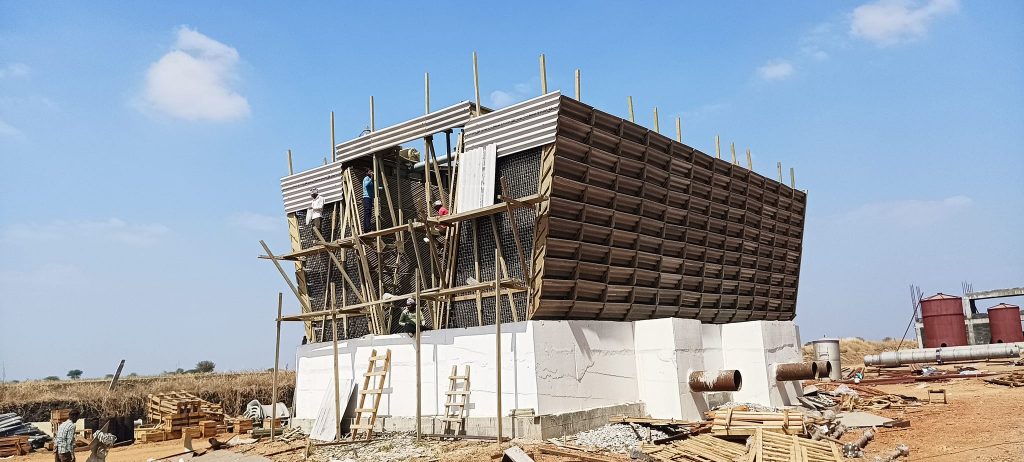When to Choose a Wooden Cooling Tower: Key Considerations
Wooden cooling towers are niche but still relevant in specific industrial applications. Here’s when they are the best choice compared to FRP, concrete, or metal towers:
1. Ideal Use Cases for Wooden Cooling Towers
- Why Wood? Unlike steel, wood doesn’t rust, making it perfect for:
- Chemical plants (e.g., fertilizer, paper mills).
- Marine/coastal facilities (saltwater exposure).
- Acidic or alkaline cooling water (pH extremes).
- Why Wood? Cost-effective for high-capacity applications:
- Power plants (coal, nuclear).
- Oil refineries & petrochemical plants.
- Steel mills & heavy manufacturing.
- Why Wood? Lower initial cost than concrete/FRP for massive towers.
- Example: A 10,000 GPM wooden tower may cost 20–30% less than an equivalent FRP model.
- Why Wood? Biodegradable and renewable (vs. plastic/steel).
- Best for: Companies prioritizing green certifications (LEED, ISO 14001).
- Why Wood? Easier to repair/modify existing wooden structures than replace with FRP/concrete.
2. When to Avoid Wooden Cooling Towers
- Risk: Accelerated wood decay (even redwood degrades).
- Better choice: FRP or stainless steel.
- Wood requires:
- Annual inspections for rot/fungi.
- Chemical treatments (e.g., copper naphthenate).
- Better choice: FRP (maintenance-free).
- Wood is overkill for:
- Commercial HVAC systems.
- Data center cooling (<500 tons).
- Better choice: Modular FRP towers.
- Risk: Wood cracks under frequent freeze-thaw cycles.
- Better choice: Concrete or hybrid designs.
3. Wood vs. Alternatives: Quick Decision Guide
| Scenario | Best Pick | Reason |
| Budget-limited large tower | Lowest upfront cost | |
| Corrosive water (non-chlorinated) | Natural rust resistance |
| Chlorinated water | Wood degrades | |
| Low-maintenance needs | No rot/decay risk | |
| Small footprint (e.g., HVAC) | Wood towers are bulky |
4. Pro Tips for Wooden Tower Longevity
If you choose wood:
- Prefer redwood/cedar over pine (longer lifespan).
- Use PVC fill media instead of wood slats (less maintenance).
- Install drift eliminators to reduce water loss.
- Treat annually with anti-fungal coatings.
Final Verdict
Choose a wooden cooling tower if you need:
Avoid wood if you prioritize maintenance-free operation or handle chlorinated water.
